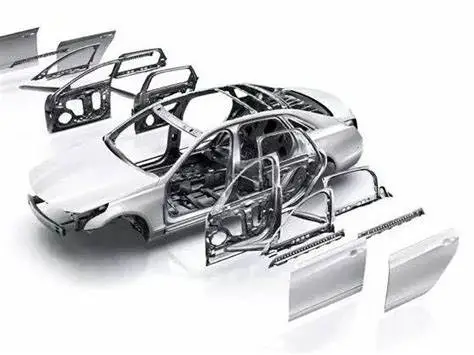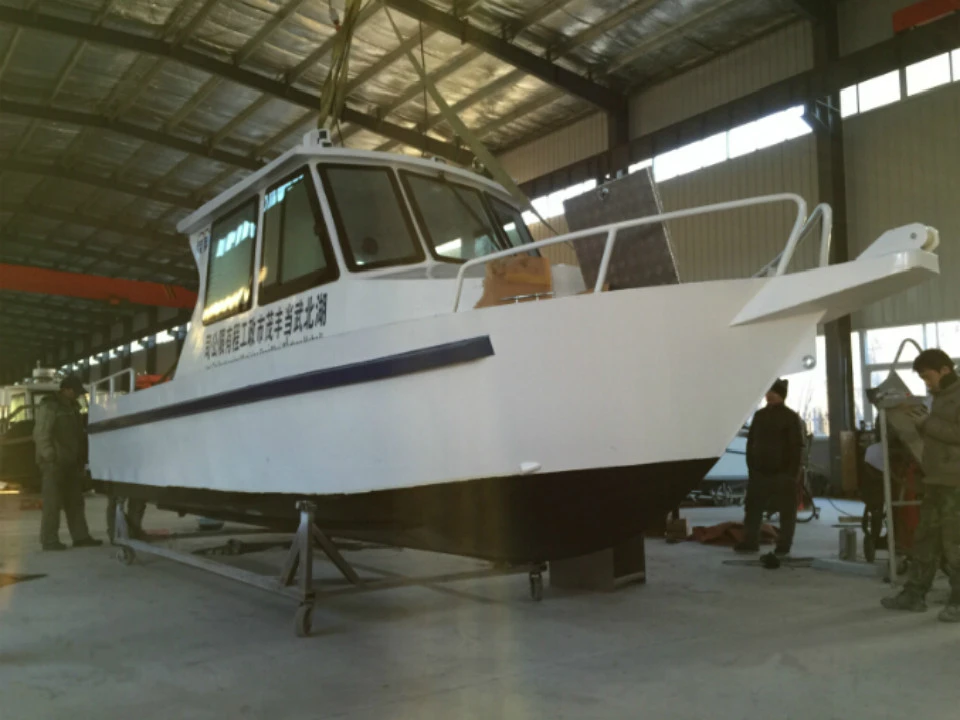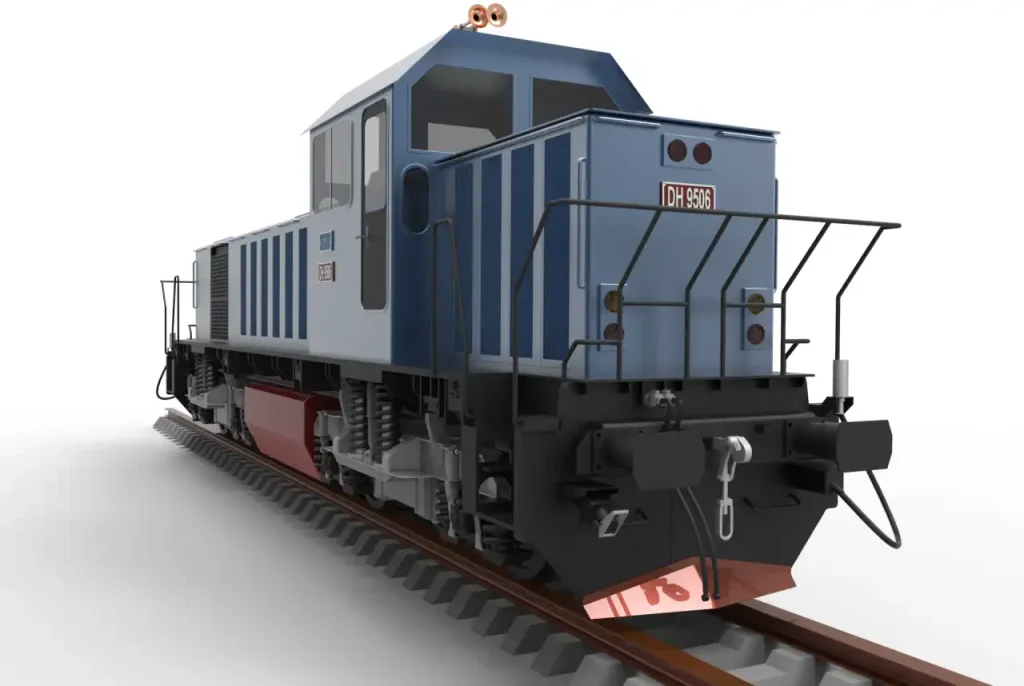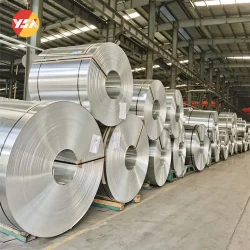In recent years, the trend of lightweighting in the four major transportation fields of automobiles, rail transportation, aviation and boats has become more and more clear. Aluminum alloy profiles because of a variety of excellent characteristics to become an important profile material to achieve lightweight transportation, the amount of rapid growth.
Aluminum in Automobile
Aluminum alloy has high strength and cost-effective ratio, and is the preferred material for automobile lightweight. The density of aluminum is about 1/3 of that of steel, and the specific strength of aluminum alloy is about 50% higher than that of high-strength steel. Every 1 kilogram of aluminum can replace 2 kilograms of steel and save 3.1 gallons of oil. In terms of price/performance, aluminum alloys are far less expensive than carbon fiber composites, although they are about 150% more expensive than steel. Magnesium alloys, while similar in price to aluminum alloys, are not as corrosion-resistant as aluminum alloys and are difficult to apply on a large scale in the automotive industry, making aluminum alloys the best lightweight material at this stage.
Aluminum in automobiles has many kinds of applications, and the intensity of aluminum dosage is gradually increasing under the wave of lightweighting. Aluminum alloy can be applied to body, engine, wheels and other structural parts and components. Against the background of the demand for energy saving and environmental protection and the advancement of aluminum alloy technology, the intensity of aluminum alloy usage in automobiles is increasing year by year.

Aluminum in Aviation
Aluminum is widely used in aircraft, mainly as aircraft structural parts. Aluminum alloy, due to its high specific strength, good forming and processing performance, is the main structural material of the aircraft, such as skin, frame, propeller, fuel tank, wall plate and landing gear strut. The proportion of aluminum alloy can vary greatly from model to model, e.g. the Boeing 737 aluminum alloy material accounts for 81%, while the Boeing 787 aluminum alloy material accounts for 20% due to the use of a large number of composite materials.
Aluminum in aviation is mainly deformed aluminum, and the proportion of casting material is relatively low. On average, about 60% of the aluminum consumed in aircraft is flat rolled, 28% is extruded (tube, bar, profile, wire), 7% is forged, and 5% is cast.
According to the classification of alloy composition, aluminum for aviation is mainly used in 2-series and 7-series. Nowadays, the aluminum alloys used for the structure of large planes in the world are mainly high-strength 2-series (2024, 2224, 2324, 2424, 2524, etc.) and ultra-high-strength 7-series (7075, 7475, 7050, 7150, 7055, 7085, etc.), which accounted for about 38% and 45% of the total number of aluminum materials used for the civil airliners, respectively.
Aluminum in Aircraft Components
Aluminum alloys have gained widespread use in the aerospace industry due to their impressive strength-to-weight ratio, ductility, and resistance to corrosion. The application of aluminum in aircraft components played a pivotal role in enabling human flight, as exemplified by the Wright Brothers’ utilization of aluminum in building the engine crankcase for their initial wooden biplane. By incorporating aluminum, aircraft manufacturers are able to achieve comparable strength to steel while significantly reducing weight. This results in lighter aircraft that can accommodate larger cargo and passenger loads, while also improving fuel efficiency. The exceptional corrosion resistance of aluminum serves as a crucial safeguard for the safety of both the aircraft and its occupants, making it an essential feature in air travel.
Aluminum in Spacecraft Components
In the realm of spacecraft, the progress of aluminum alloys has been closely intertwined with the advancement of spacecraft and rocket technology. From early engine prototypes to the adoption of aluminum-lithium alloys by NASA, aluminum has been an integral part of the space program since its inception. Similar to aircraft components, spacecraft components necessitate materials with high strength, low weight, corrosion resistance, and ductility. Aluminum is also employed in spacecraft windows, with aluminum nitride serving as a transparent ceramic material used in the production of bulletproof materials. Additionally, the utilization of the aluminum-niobium alloy in the Falcon 9 rocket showcases its remarkable strength at high temperatures, underscoring its significant role in aerospace applications.

Aluminum in Ships
Ship hull light and strong is the pursuit of ship construction has been unchanging, especially for cargo ships. Aluminum’s light weight and high strength are the best choice for aluminum in ship construction. In addition to tankers and large ships, aluminum is used to build yachts, speedboats and submarines. Most sports boats are also made of aluminum. Aluminum keels and masts give racing boats a speed advantage in races and add excitement to leisure activities.

Aluminum in Trains
For centuries, steel has been the primary material used to build trains, but today aluminum alloys are becoming the primary material used in railway industry because of their easier-to-form and lighter weight qualities. Aluminum’s strength-to-weight ratio is one of the main factors in high speed trains that can reach speeds in excess of 350 kilometers per hour. Aluminum alloys in railway industry have a lower density, but are as strong as steel and have excellent corrosion resistance, which helps in the maintenance of the trains. In addition, aluminum alloy cables are increasingly being used to replace traditional copper cables in railroad transmission and installation.

Summary
In summary, aluminum has a wide range of applications in the transportation industry, including automotive manufacturing, rail transportation, aerospace, shipbuilding and other fields. Aluminum’s light weight, high strength and good corrosion resistance make it the preferred material to improve the performance, energy efficiency and sustainability of transportation.

